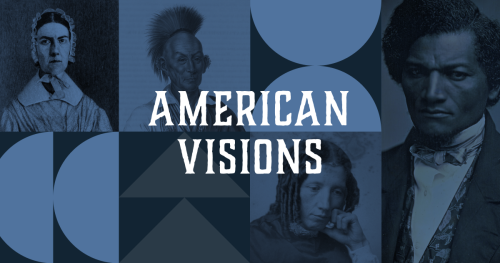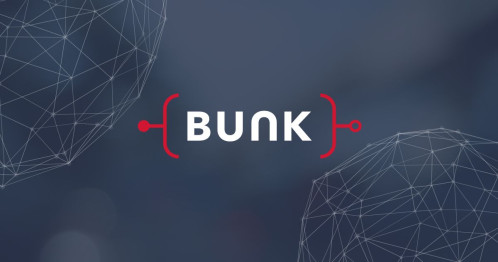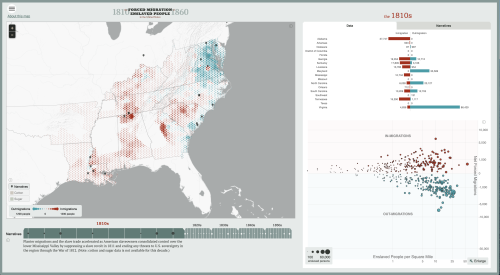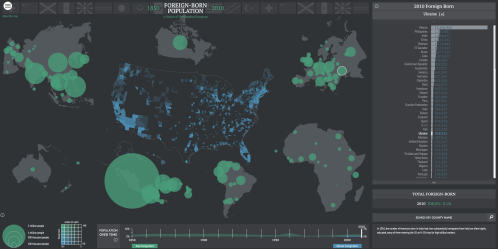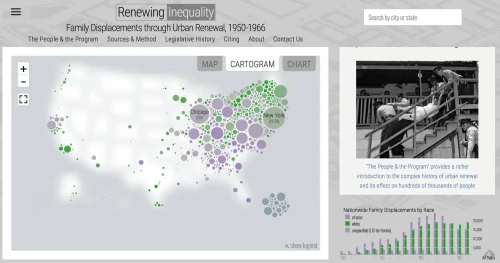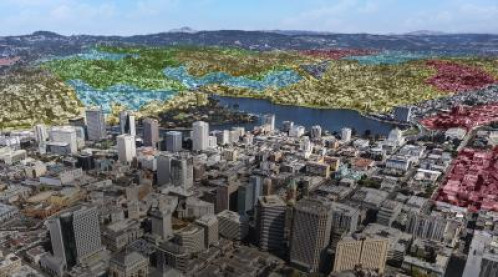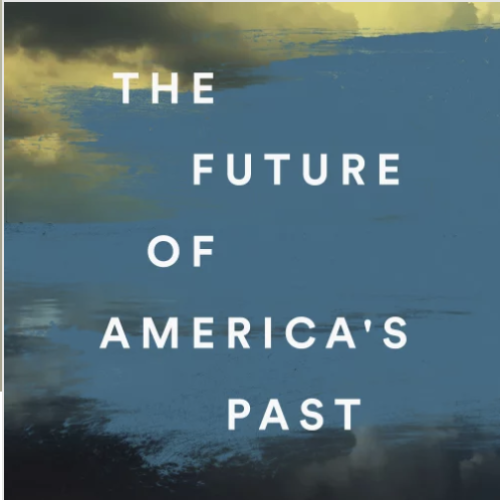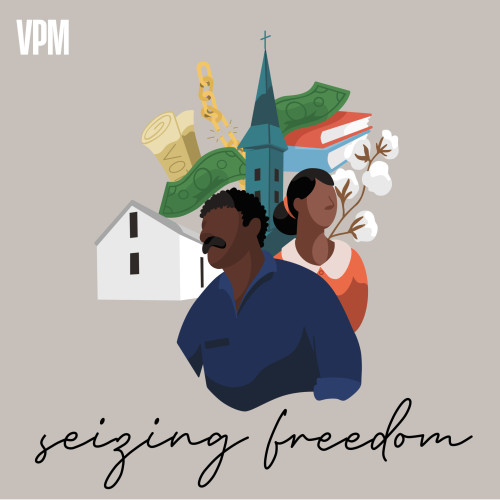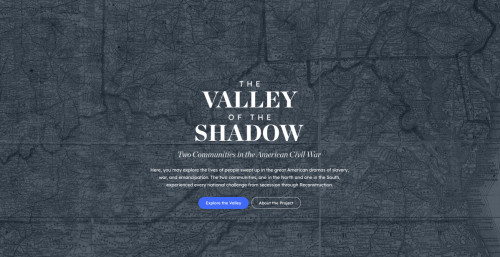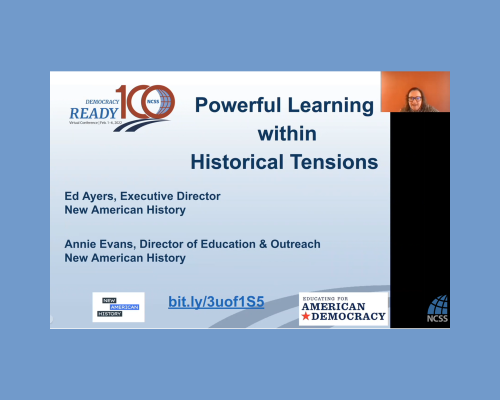This work by New American History is licensed under a Attribution-NonCommercial-ShareAlike 4.0 (CC BY-NC-SA 4.0) International License. Permissions beyond the scope of this license may be available at newamericanhistory.org.
Explaining Today
Access Learning Resources
All New American History Learning Resources, including topics not requested during listening sessions, are accessed here.
In the spring of 2022, the American Historical Association, the National Council for Social Studies, the John N. Gardner Institute for Experience in Undergraduate Education, and New American History hosted a series of listening sessions for K-12 educators and higher education faculty, an opportunity to listen to the concerns of educators who are on the front lines, teaching students in an era of misinformation, "divisive concepts" litigation and misappropriation of the graduate level law school theory now co-opted as "CRT." Teachers expressed a need to find inquiry-based learning resources and tools to foster reflective thinking using credible sources, without violating the majority of these new state and local policies. In the spirit of supporting these colleagues, we offer the following.
Learning Resources:
The following learning resources were created by K16 educators in collaboration with New American History, and vetted by our colleagues at the American Historical Association, in collaboration with the National Council for Social Studies, and the John N. Gardner Institute for Experience in Undergraduate Education. This work by New American History is licensed under an Attribution-NonCommercial-ShareAlike 4.0 (CC BY-NC-SA 4.0) International License. Permissions beyond the scope of this license may be available at newamericanhistory.org or by contacting editor@newamericanhistory.org.
Topics (as requested by educators in previous listening sessions)
Early America
Emancipation and Reconstruction
- Freedom's Fortress
- T. Thomas Fortune: The Black Radical You've Never Heard Of
- Harriet Tubman
- Seizing Freedom: A Tulsa Postcard
- Seizing Freedom: Truth Makes the Man Free
- A Brief Moment in the Sun
- Southern Journey: The Restless South, 1860-1940
Redlining
- Mapping Inequality: Redlining in New Deal America
- Renewing Inequality: From Redlining to Family Displacements through Urban Renewal, 1950-1966
- Not Even Past: Redlining and Public Health
- The Lines That Shape Our Cities: Redlining and Environmental Inequalities
- Southern Journey: Arrival and Return, 1940-2020
Additional Learning Resources from New American History exploring a variety of topics may be found here:
Please explore our full suite of tools and resources available for classroom use from New American History.
American Visions
New American History
This companion site to the text, American Visions: The United States, 1800-1860, by Ed Ayers, includes a complete digital list of original sources used to research the book, ArcGIS StoryMaps for each chapter and a Travelogue series to contextualize how the history is being shared in public spaces in the modern era. Learning Resources and powerful videos ready for classroom use are linked within the site.
Bunk
New American History and the University of Richmond
Bunk is a shared home for the web’s most interesting writing and thinking about the American past. Join us to explore the multi-dimensional connections between past and present. Explore Bunk exhibits, share an interesting connection, or curate and annotate your own Bunk Collections!
Maps
New American History and American Panorama, in collaboration with the Digital Scholarship Lab at the University of Richmond
The map shows where nearly a million enslaved people were moved from and where they were moved to through the American slave trade and the migration of planters from 1810 to 1860. Based on Census data, the map employs the use of data visualizations, timelines, and powerful narratives of the enslaved to help students understand both the economic and human history across decades of forced migration.
Taking a wide focus, Southern Journey narrates the evolution of southern history from the founding of the nation to the present day by focusing on the settling, unsettling, and resettling of the South. Using migration as the dominant theme of southern history and including indigenous, white, black, and immigrant people in the story, author Edward L. Ayers cuts across the usual geographic, thematic, and chronological boundaries that subdivide southern history. Using StoryMaps to combine text, interactive maps, and other multimedia content for storytelling enhances the original text for classroom inquiries.
At all points in its history, a significant proportion of the population of the United States had been born in other countries and regions. This being the case, American history can never be understood by just looking within its borders. The culture and politics of the US have always been profoundly shaped by the material and emotional ties many of its residents have had to the places where they were born. This map will allow you to begin to explore those connections at the basic level of demographic statistics.
Mapping Inequality provides the public with digitized federal government housing documents from more than eighty years ago. This unique collaboration created a foundational resource for unprecedented research, education, organizing, and policy advocacy on redlining and current economic, environmental, and public health challenges.
For a quarter century, the federal government provided funding for cities large and small to raze "blighted" or "slum" neighborhoods. Though improved housing opportunities was the ostensible goal, over time, cities used federal funds to stimulate commercial and industrial redevelopment. Through these programs, cities displaced hundreds of thousands of families from their homes and neighborhoods. Renewing Inequality visualizes those displacements and urban renewal more generally.
There is no better archive of redlining than the HOLC maps and the accompanying area descriptions. This site juxtaposes these maps from the 1930s with contemporary health disparities. In most cities, you will see striking similarities between redlining eighty years ago and health disparities today. This is a testament to the long-lasting impact of racial segregation and redlining in shaping the enduring contours of marked inequality in American cities.
Borders and cartography are inherently political and there lies real power in who gets to decide a boundary. This StoryMap illustrates the connection between the original HOLC maps and the world today, using both an environmental and social lens. Comparing maps from the 1930s to today, a series of case studies showcase how redlining maps have perpetuated environmental inequalities, including urban heat, tree coverage, impervious surfaces, urban renewal, and topography. Understanding where inequalities stem from provides a path to help ameliorate the problems today.
Storytelling through Documentary Film
New American History in collaboration with Field Studio and VPM
Podcasts
New American History, in collaboration with Virginia Humanities and VPM
The program, which featured interviews, free-wheeling conversation, and narrative storytelling, was produced by Virginia Humanities. This archive includes episodes and transcripts from BackStory’s entire 12-year run. Individual segments and enhanced search features including related resources make this archive a classroom-ready resource.
Now in its second season, Seizing Freedom is hosted by Kidada Williams, with support from VPM and Executive Producer Ed Ayers. Learning Resources are produced in collaboration with New American History.
Digital Archives, New American History and the University of Richmond, in collaboration with the University of Virginia Library
Here, you may explore the lives of people swept up in the great American dramas of slavery, war, and emancipation. The two communities, one in the North and one in the South, experienced every national challenge from secession through Reconstruction. Learning Resources for using the archives are available from New American History.
Medium
Blog posts from our Executive Director, Historian Ed Ayers, and the New American History team, ready for classroom use, and embedded in Bunk to make historical connections.
Pedagogy
View our New American History presentation at the NCSS 100th Anniversary conference. Executive Director Ed Ayers and Director of Education and Outreach Annie Evans led a discussion on teaching through historical tensions.
Our Collaborators
We value our partnerships with the American Historical Association, the National Council for Social Studies, and the John N. Gardner Institute for Experience in Undergraduate Education.
They provide valuable guidance, resources, professional learning and advocacy in this work. Please review their resources and share widely!
AHA: Teaching History with Integrity, AHA Condemns Report of Advisory 1776 Commission (January 2021), The Erasing History or Making History? video and The Future of the African American Past Video Resources.
NCSS: A Response to the Attacks on Social Studies Education in State Legislatures and Local Boards of Education, Academic Freedom Community, and the Learn from History Teacher Toolkit.
JNGI: Socially Just Design in Postsecondary Education series, and the Teaching and Learning Academy.



